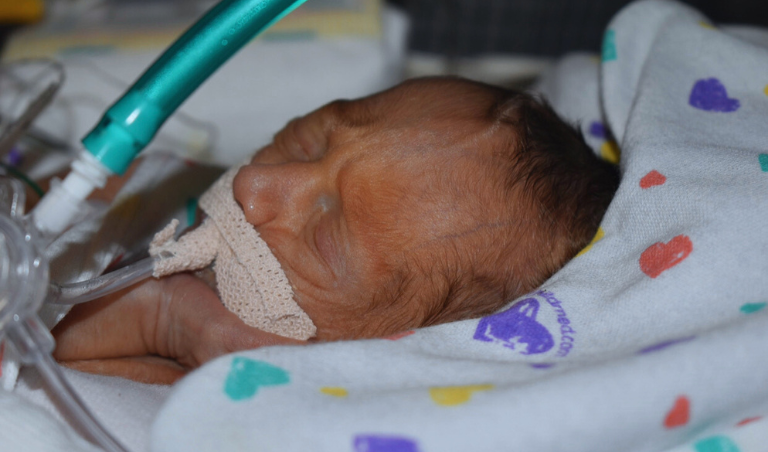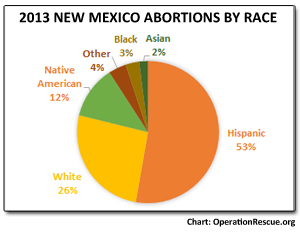Vague Language and Deceptive Tactics Could Cost ‘Wanted’ and ‘Unwanted’ Preborn Children Even More than Americans Might Realize
By Sarah Neely
Last week, Operation Rescue reported on the detrimental effect that pro-abortion ballot initiatives in ten separate states will have on children targeted by abortion.
Troy Newman, President of Operation Rescue, sounded the alarm, stating, “If these amendments pass, our nation will be struck by a large-scale slaughter of innocent babies like we’ve never seen before.”
But there is a second, equally sinister aim of many of these ballot initiatives. When it comes to law-making, language is everything, and five of these ten amendments currently offer a disturbing new definition for “fetal viability.”
“Viability” in 1973
Until its demise in 2022, Roe v. Wade was the standard go-to for defining “viability.” The Court opinion, which forbade states from completely banning abortion prior to the point of “viability,” defined the term (pg 160) as when a preborn child was “potentially able to live outside the mother’s womb, albeit with artificial aid” (emphasis added).
The 1973 opinion goes on to say, “Viability is usually placed at about seven months (28 weeks) but may occur earlier, even at 24 weeks.”
However, fifty-one years later, preterm babies can live much earlier than 28 weeks. With continuous advances in medical science, babies can now survive outside the womb as early as 21 weeks. These tenacious “micro-preemies” have proved again and again that the point of viability established by Roe is outdated and irrelevant.
The abortion lobby knows this all too well. Despite decades of dehumanizing preborn children by labeling them “a clump of cells,” innovations like 4-D ultrasound have shown the captivating world inside the womb much clearer than anything that was available in 1973.
In the face of irrefutable, biological science, the abortion industry can only lie harder. Instead of allowing any acknowledgement that a child in the womb is undoubtedly a human person – someone who can dream, suck her thumb, feel pain, and even survive and thrive as early as 21 weeks – the abortion lobby has doubled down, attempting to create a new legal viability that can be interpreted by any liberal court as much further along than the 28 weeks Roe allowed.
“Viability” Redefined 51 Years Later
Five of the ten amendments currently on state ballots offer this appalling definition for viability:
“‘Fetal viability’ means the point in pregnancy when, in the good faith judgment of a treating health care professional, and based on the particular facts of the case, there is a significant likelihood of the fetus’s sustained survival outside the uterus without the application of extraordinary medical measures” (emphasis added).
Unlike the Roe decision, which acknowledged a preterm baby would likely need “artificial aid” to survive, the architects of these proposed constitutional amendments went out of their way to define a child as viable only if he or she can “sustain survival” without “extraordinary medical measures.”
“These measures are not defined,” Newman says. “Rather, they will be left to judges and legislators to sort out – some of whom could define ‘extraordinary medical measures’ as something as simple as requiring extra oxygen at birth, or a temporary feeding tube. By leaving these vague amendments ‘up for interpretation,’ the abortion lobby knows it can easily push ‘viability’ from 24 or 28 weeks to something like 35 or 36 weeks.
“In fact, a court could decide that a full-term baby which an abortionist anticipated to need expensive or specialized medical care was not ‘viable’ and, therefore, legally allowed to be killed. Such a precedent would pave the way for the expansion of legal, brutally painful, late-term abortions.”
Consequences Beyond Abortion
This new standard would also target the 400,000 premature babies born in America every year. These babies often need an array of medical interventions from breathing vents to specialized medications, surgeries, feeding tubes, and warming beds – all treatments that help these often “pre-viability” children continue to grow and develop just as they would have inside the womb.
The Operation Rescue team is no stranger to these tiny fighters born at the same stage of gestational development as those labeled “a clump of cells” and violently aborted.
Newman has experienced the Neonatal Intensive Care Unit as a grandfather, cheering on three of his grandchildren who were born prematurely and required specialized care.
His first two “tiny fighters” were twins, born at 32 weeks, 5 days.
His most recent grandchild, Remington, was born last year at 25 weeks, 4 days, weighing one pound and four ounces. Remington spent 87 days in the NICU, learning to breathe, fight off infection, and beat the odds. He is currently 13 months old, healthy, and hitting his milestones like the little warrior he proved to be during those challenging days that followed an unexpected, emergency delivery.

In 2022, Sarah Neely, Operation Rescue Project Coordinator, delivered her daughter Marigold at 27 weeks, 2 days. Born with severely underdeveloped lungs and weighing just over two pounds, Marigold was given a 30% chance of survival and described as “one of the sickest babies” the NICU doctors had ever seen.
While Neely was pregnant with Marigold, complications arose at about 17 weeks. Neely was offered an abortion twice by her maternal fetal medicine doctor.
“The odds were against Marigold from the start,” Neely says, “but she persevered for six and a half months. During that time, her father and I got to watch her grow, see her smile, hold her in our arms, and get to know her willful, beautiful personality. She didn’t get to stay with us – her lungs were just too weak. But she was a vibrant, viable, and wonderful blessing. We are so grateful for the time we had with her.”

In the early weeks of her long hospitalization leading up to the birth, Neely and her husband were also required to have weekly discussions about resuscitation protocols for Marigold as the hospital was not “ethically required” to give Marigold any life-saving measures until 24 weeks, the hospital’s ‘line in the sand’ for viability.
Neely adds, “Had I gone into labor at 23 weeks, 6 days, the doctors had no ethical obligation to treat Marigold like an actual patient and offer life-saving measures. Twenty-four hours later, at 24 weeks, they magically had an ethical obligation. I have never seen a greater example of how arbitrary the idea of ‘viability’ truly is. As the Seuss quote goes, ‘A person is a person no matter how small.’”
The pro-life movement has known since the days of Roe that “viability” is just the abortion cartel’s deceptive ploy to strip away humanity from as many preborn children as it can, superficially weeding out the “real” humans from the “clumps of tissue.” It’s dehumanization at its darkest, beginning at the moment when a child is most helpless: in the womb.
Beyond those children targeted by abortion, this new definition of “viability” could easily jeopardize these already vulnerable premature babies, pushing the point in pregnancy that hospitals are legally and ethically obligated to give life-saving care further and further toward the nine-month mark. A lucrative move for the abortion lobby, as parents might feel even greater pressure than before to abort a so-called “non-viable” child who is no longer guaranteed life-saving care if born before some newly defined point late in the third trimester.
“We cannot stress enough how deceptive and dangerous these amendments truly are,” Newman adds. “Pro-lifers must turn out to vote, and we must vote no for every one of these ballot initiatives. Our nation is on the cusp of coming back from the darkness, or plunging headlong into unfettered, unimaginable numbers of murdered children. Please, for the sake of every preborn child in need of protection, vote no.”
This report may be republished with inclusion of the following acknowledgement: “This article was originally published by Operation Rescue, a leading pro-life, Christian activist organization dedicated to exposing abortion abuses, demanding enforcement, saving innocent lives, and building an abortion-free America. The author, Sarah Neely, is Chief Operating Officer for Operation Rescue.”





